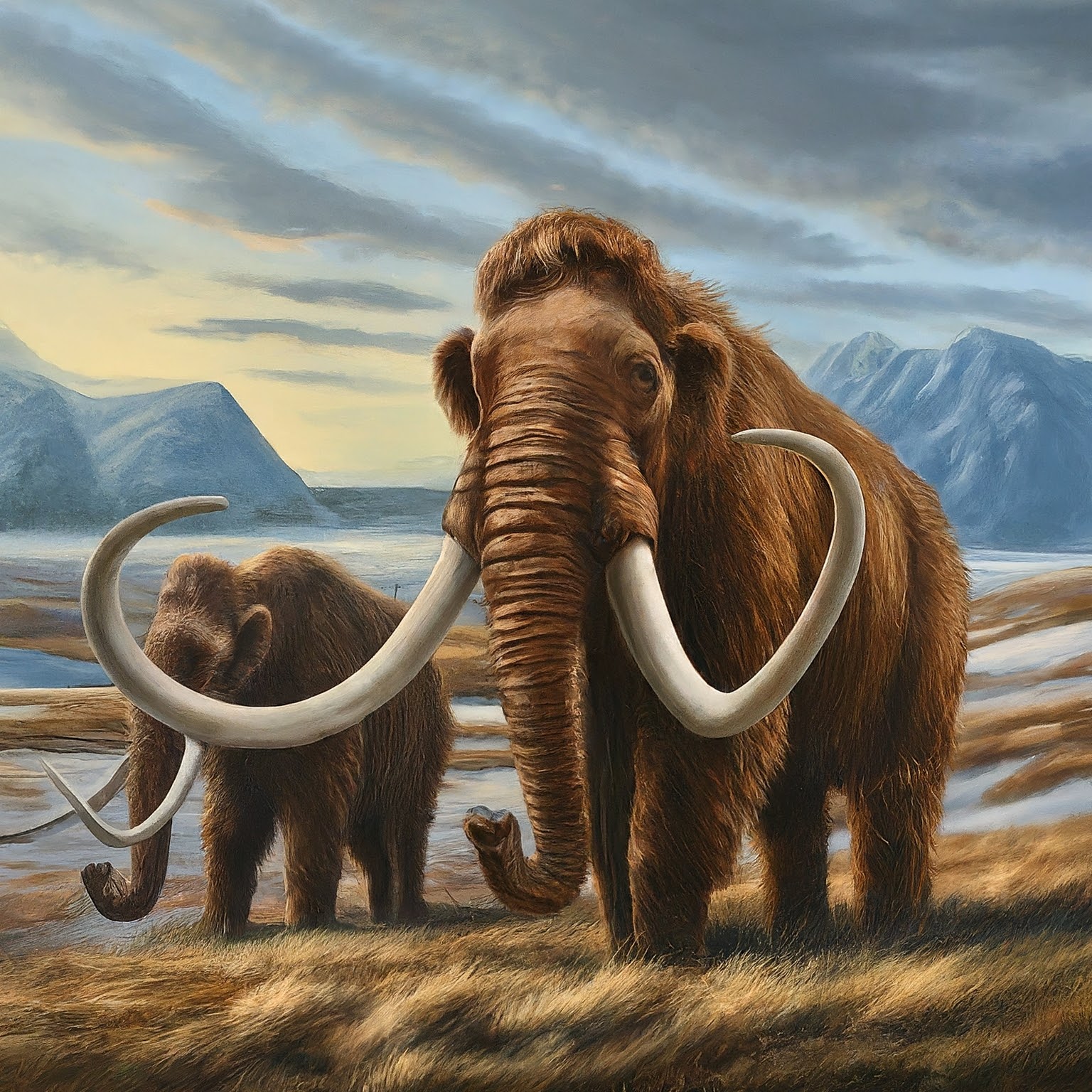Unraveling the Science Behind De-Extinction and Genetic Engineering
Prof. Aécio D’Silva, Ph.D. and Team
AquaUniversity
Resurrect the Woolly Mammoth – In a groundbreaking feat of science, we stand on the brink of reviving a species that vanished from the Earth over 4,000 years ago. The woolly mammoth, a majestic creature of the Ice Age, could once again walk the tundra. But how is this possible? The answer lies in the cells of its closest living relative, the Asian elephant, and the wonders of genetic engineering.
The woolly mammoth, an icon of prehistoric life, has captured our imagination for centuries. Now, scientists are turning what was once science fiction into reality by attempting to bring back this extinct species through advanced genetic engineering techniques. This process involves reprogramming cells from the Asian elephant to express woolly mammoth traits—a complex and ambitious endeavor that could change conservation and our understanding of genetics forever.
Resurrect the Woolly Mammoth – The Science of De-Extinction:
De-extinction, the concept of bringing back extinct species, is no longer relegated to the realms of fantasy. It involves a series of intricate steps that begin with the extraction and modification of genetic material.
Resurrect the Woolly Mammoth – Reprogramming Elephant Cells
The first step in this process is creating induced pluripotent stem (iPS) cells from the Asian elephant, which are then reprogrammed to an embryonic state. These iPS cells have the potential to differentiate into any cell type, making them the building blocks for genetic resurrection. [1]
What are Induced pluripotent stem (iPS) cells?
Induced pluripotent stem (iPS) cells are a type of pluripotent stem cell that can be generated directly from adult somatic cells. They are called “pluripotent” because they have the ability to differentiate into any type of cell in the body. The creation of iPS cells is significant because it does not require the use of embryos, which has been a source of ethical controversy in stem cell research.
To create iPS cells, scientists introduce specific genes into adult cells. These genes, often referred to as “Yamanaka factors,” include Oct3/4, Sox2, Klf4, and c-Myc. This process reprograms the adult cells to return to a pluripotent state, effectively “resetting” them. This discovery, made by Shinya Yamanaka and his team in 2006, earned him a Nobel Prize and has opened up new possibilities in regenerative medicine and disease modeling. {2]
The general steps to create iPS cells are as follows:
- Isolate and culture donor cells: Typically, these are skin or blood cells.
- Introduce Yamanaka factors: This is done using viral vectors or other methods to deliver these genes into the cells.
- Reprogramming: Over a few weeks, the introduced genes activate the cell’s own pluripotency-related genes, converting them into iPS cells.
These iPS cells can then be used for various applications, including disease modeling, drug discovery, and the potential for creating patient-specific therapies without the risk of immune rejection.
Resurrect the Woolly Mammoth – Resurrect the Woolly Mammoth – Editing Genes for Mammoth Traits
Using CRISPR technology, scientists can edit the DNA within these iPS cells, inserting genes responsible for the woolly mammoth’s distinctive characteristics, such as shaggy hair and thick layers of fat needed for Arctic survival. [2, 3]
Overcoming Technical Hurdles
The journey to create a mammoth from elephant cells is fraught with challenges. The complexity of elephant genetics and the need for precise genetic alterations mean that researchers must navigate uncharted scientific waters to achieve their goal. [1]
Resurrect the Woolly Mammoth – Ethical Considerations
As we edge closer to de-extinction, ethical questions arise. What are the implications of bringing back a species that has been extinct for millennia? The debate continues as science advances.
The Benefits of Reviving the Mammoth:
Beyond the sheer wonder of resurrecting a prehistoric giant, the revival of the woolly mammoth could have tangible benefits for the environment and scientific research.
Ecological Impact
The reintroduction of woolly mammoths could help restore the Arctic tundra ecosystem, potentially mitigating some effects of climate change.
Advancements in Medicine
Research into elephant and mammoth genetics could lead to breakthroughs in human medicine, particularly in understanding disease resistance. [2]
Challenges Facing the Mammoth Project:
Despite the excitement, the path to de-extinction is lined with obstacles that must be carefully navigated.
Technical Feasibility
Creating a living, breathing mammoth from reprogrammed cells is an unprecedented scientific endeavor, pushing the boundaries of current technology.[1]
Ethical and Environmental Concerns
The prospect of reintroducing an extinct species raises complex ethical and environmental issues that must be addressed. [2, 3]
Resurrect the Woolly Mammoth – Financial and Resource Investment
The mammoth project requires significant funding and resources, posing questions about the allocation of conservation efforts. [1]
To conclude, the quest to resurrect the woolly mammoth is more than a scientific curiosity; it’s a testament to human ingenuity and the relentless pursuit of knowledge. By reprogramming cells from the Asian elephant, scientists are not only looking to bring back a lost species but also to unlock secrets that could benefit ecosystems and human health. As we stand at the crossroads of history and the future, the woolly mammoth serves as a symbol of the possibilities that lie within our grasp and the responsibilities that come with such power.
References:
[1] “Will these reprogrammed elephant cells ever make a mammoth?” Nature. https://www.nature.com/articles/d41586-024-00670-z.
[2] https://www.britannica.com/science/induced-pluripotent-stem-cell.
[3] “Colossal’s Woolly Mammoth Project Advances as Elephant iPSCs Clear Milestones” GENhttps://www.genengnews.com/topics/genome-editing/colossals-woolly-mammoth-project-advances-as-elephant-ipscs-clear-milestones/.
[4] “Colossal Creates Elephant Stem Cells for the First Time in Quest to Revive the Woolly Mammoth” Singularity Hub. https://singularityhub.com/2024/03/12/colossal-creates-elephant-stem-cells-for-the-first-time-in-quest-to-revive-the-woolly-mammoth/.






